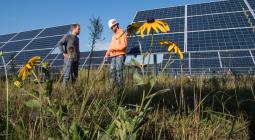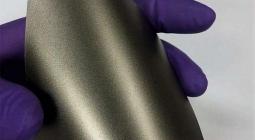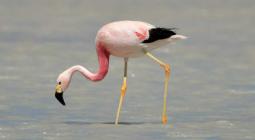National Renewable Energy Lab Studies Plants In Twin Falls Solar Field.
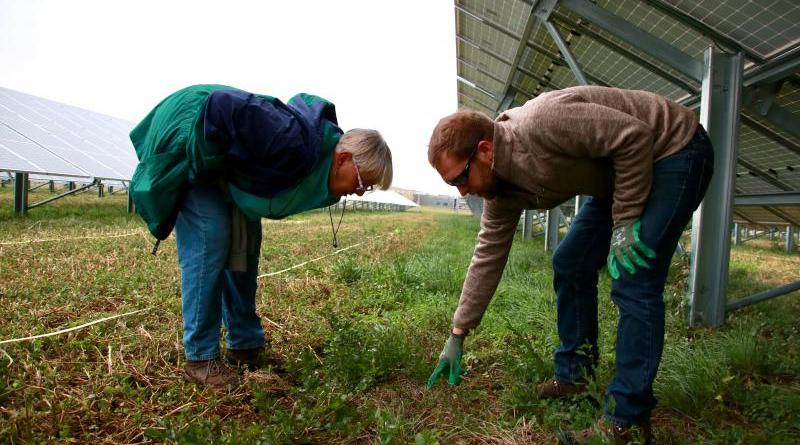
Over a dozen rows of blue solar panels stand in a grassy lot. This is the new solar field opened by Clif Bar. The panels will produce about a third of the energy needs for the company’s manufacturing plant in Twin Falls.
The National Renewable Energy Lab (NREL) is studying which plants grow best around solar panels, and which ones bring pollinators with them. Clif Bar is one of 25 sites accross the country in NREL's InSPIRE project, which is examining how things like native vegetation, beekeeping and agriculture co-exist with solar fields. Over the next decade, the lab predicts three million acres in the U.S. will be covered by solar panels.
Last month, the NREL team members traveled to Twin Falls from Golden, Colorado, to visit the site and gather data. At the Twin Falls location, they're evaluating various pollinator-friendly seed mixes, according to Jordan Macknick, an analyst at NREL who's leading the InSPIRE project.
In the grassy rows between panels, the researchers set up long transects. Brenda Beatty, the lead biologist on the project, adjusted a laser pointer that shot a red light toward the ground. When it landed on a plant, she bent down to identify it, and then continued down the row.
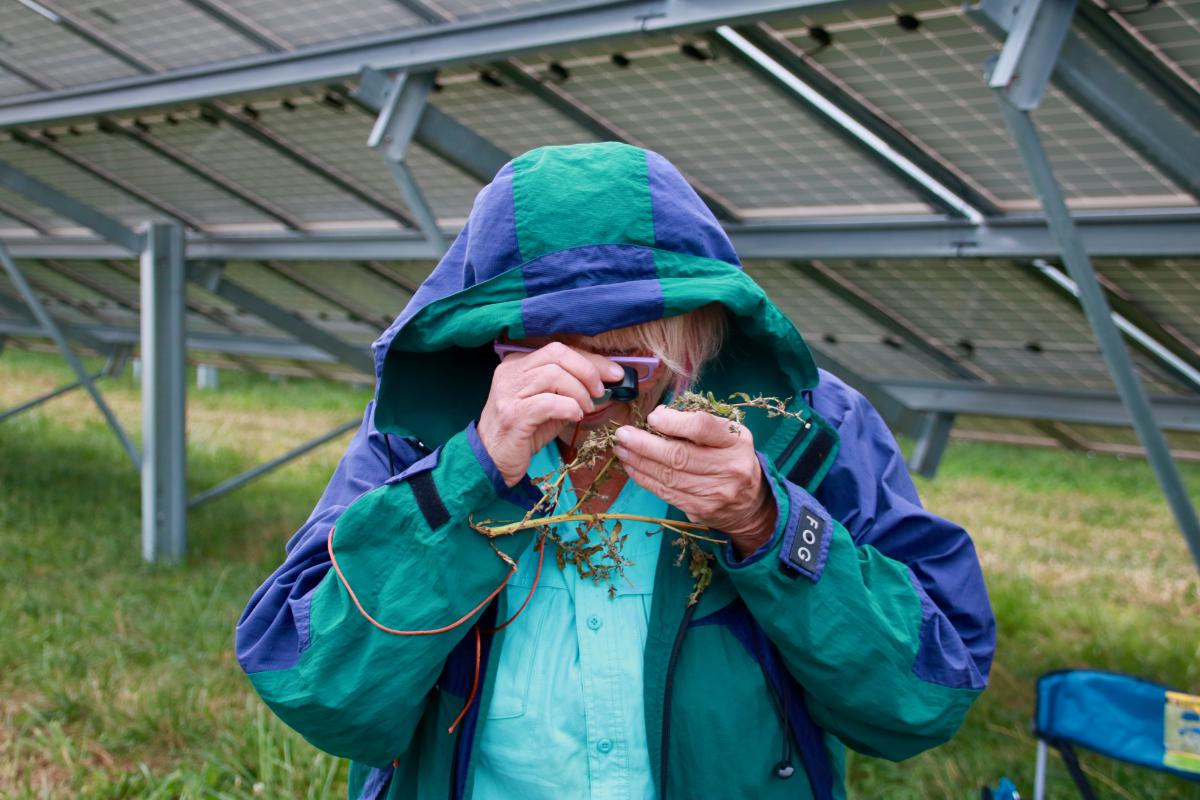
There aren't many flowers to see in this field yet, but as the plants like milkweed, buckwheat and blue flax grow, the team will come back.
Macknick said they're studying this "to best understand which of the flower species that were planted are actually going to thrive in this partial shade environment."
That’s because, he said, a solar field makes for a unique growing environment.
"You’re going to have differences in the amount of sunlight that comes in, differences in soil moisture, differences in wind," he said. "All these things can affect what types of species will grow."
Macknick said the field 50 yards away is completely different because the panels essentially create their own microclimate.
Alex Cagle is a PhD student at UC Davis who studies what happens to ecosystems under solar panels. Many solar fields sit on top of cleared vegetation.
“Typically, upon construction, the ground is grated and the topsoil is removed so its left pretty barren and exposed," Cagle said. "So that initially degrades the natural environment and disrupts the local ecologies.”
Then, after panels go in, it’s usually gravel, turf or non-native grasses that fill in the ground beneath. Cagle said this can shift the chemical makeup of the soil, discouraging some plants to grow there.
The Clif Bar site is different. It’s part of the NREL’s “low-impact solar” model.
The goal is to implement solar in a way that not only does the least harm to the existing environment, but also creates a thriving ecosystem there — plants, bees, birds and all.
NREL found when plants do grow in solar fields, it can actually increase the amount of energy the panels are able to soak up.
"The vegetation will create a cooler microclimate underneath the panels," Macknick said. "Those cooler conditions will actually lead to higher panel efficiencies, so having vegetation, as opposed to gravel, underneath solar panels will lead to higher solar output."
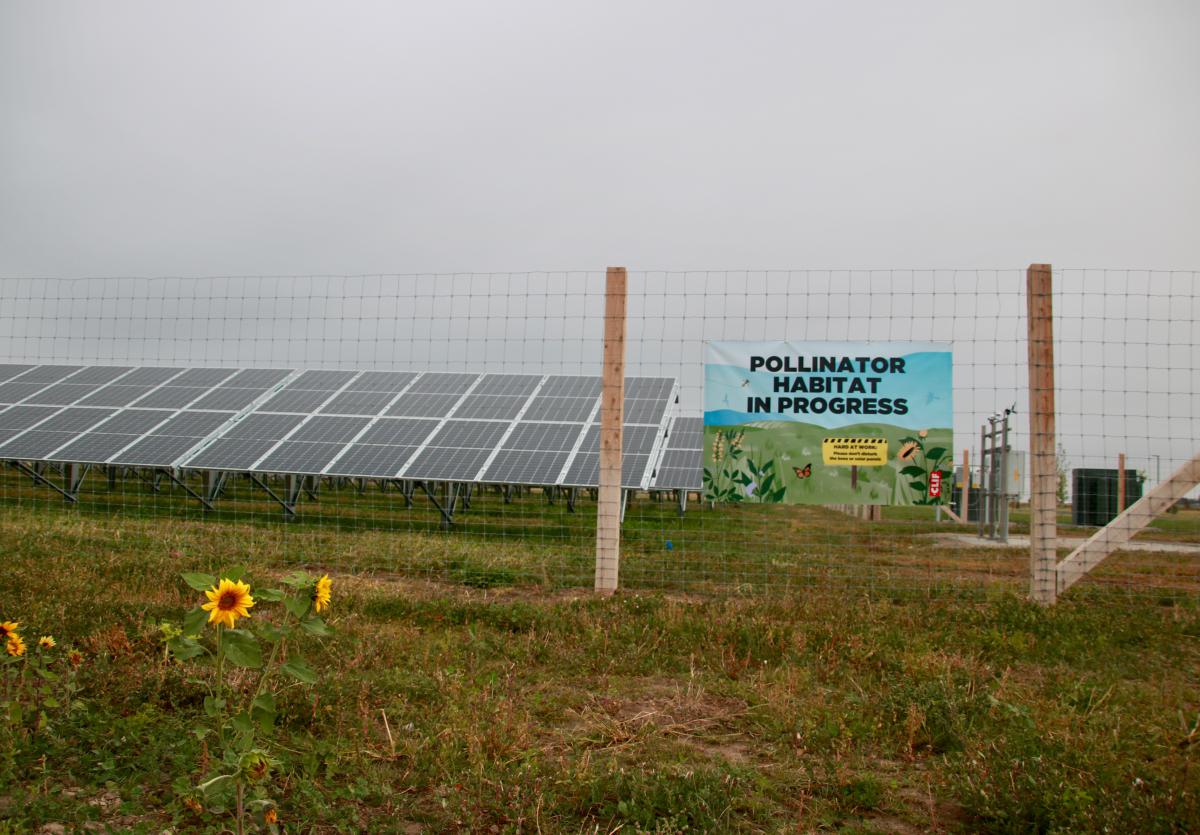
And pollinators thrive among the native perennial plants, which benefits local agriculture. Rob Davis of the energy policy group Fresh Energy worked with Clif Bar and NREL on this pollinator-friendly solar environment. Davis said bees are in desperate need of healthy habitat, and we need bees to help our food grow.
"You don’t have Clif Bars without pollinators," he said.
Once the plants start coming in, NREL will keep track of the critters that come to enjoy the landscape. Davis will help spread the findings so when other organizations move to solar, they also think of the bees.
Though the project has just begun, Davis already sees signs of growth. Just outside the gates of the solar field, he spotted a Mason bee snuggled inside a sunflower. One day, when more plants start to come in, Clif Bar hopes to make honey from the bees that visit the solar garden.
9 October 2019
Boise State Public Radio

